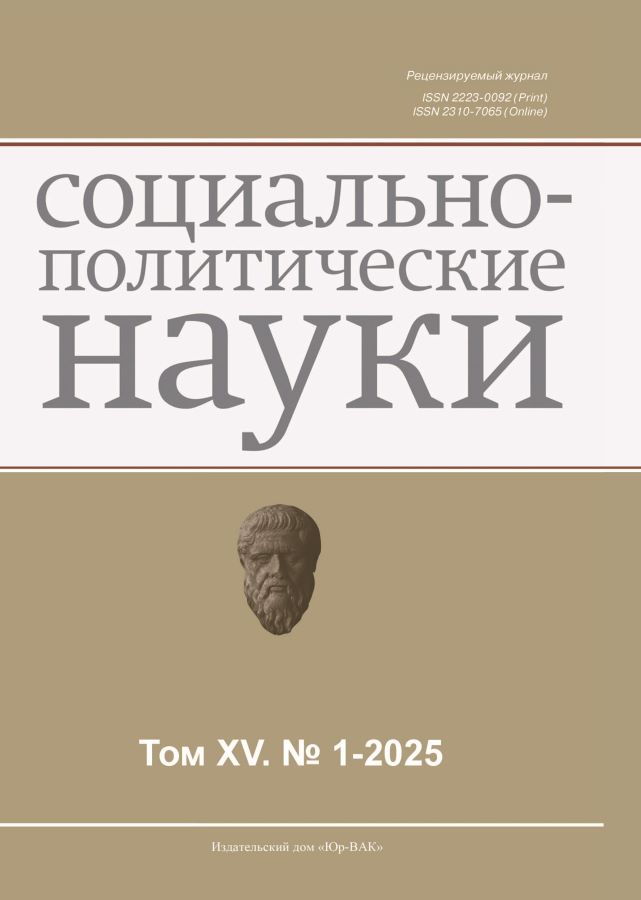The issue of transboundary water use as a cause of existing and potential regional conflicts
- Autores: Sizov A.A.1
-
Afiliações:
- Moscow State Institute of International Relations (University) of the Ministry of Foreign Affairs of the Russian Federation
- Edição: Volume 15, Nº 1 (2025)
- Páginas: 91-100
- Seção: International Relations, Global and Regional Studies
- URL: https://journals.eco-vector.com/2223-0092/article/view/679144
- DOI: https://doi.org/10.33693/2223-0092-2025-15-1-91-100
- EDN: https://elibrary.ru/IZAEVW
- ID: 679144
Citar
Texto integral
Resumo
The main purpose of this article is to highlight the increasing significance of water scarcity as a factor in international relations and geopolitical influence/dependence among states. The study is based on one of the aspects of the global freshwater scarcity – transboundary water use. The causes of international tensions and conflicts arising from the uncoordinated use of water resources of transboundary hydrological objects are considered. The study emphasizes the increasing value of freshwater as a vital resource and the increasing limitations on access to water sources due to economic development, climate change, and demographic shifts. Areas with a high probability of international conflicts caused by uncoordinated water use in key transboundary water bodies are identified. The article provides a detailed analysis of the causes and prospects of both existing and emerging regional conflicts driven by transboundary water use issues.
Texto integral
Sobre autores
Andrei Sizov
Moscow State Institute of International Relations (University) of the Ministry of Foreign Affairs of the Russian Federation
Autor responsável pela correspondência
Email: Sizov010@yandex.ru
Código SPIN: 2516-6951
Cand. Sci. (Eng.), PhD student
Rússia, MoscowBibliografia
- Kochetkov V.V., Medvedkov A.A., Kuzmenko E.A., Nessar O.M. “Water wars” as a source and instrument of international conflicts. Russia and the World: Scientific Dialogue. 2023. No. 4 (10). Pp. 118–133. (In Rus.). doi: 10.53658/RW2023-3-4(10)-118-133. EDN: LDWFCH.
- Yakutseni S.P. Water: Resources, reserves, markets. Russian Mining Industry. 2022. No. 4. Pp. 120–128. (In Rus.). doi: 10.30686/1609-9192-2022-4-120-128. EDN: IDJORL.
- Vasiliev A.M., Elkina E.A. Water of the Nile. Present. Past. Future. Asia & Africa Today. 2024. No. 11. Pp. 31–39. (In Rus.) doi: 10.31857/S0321507524110047. EDN: BILAWH.
- Dombrovskaya E.I. The issue of water security in the Middle East and North Africa region. Political Science Issues. 2024. Vol. 14. No. 5 (105). Pp. 1819–1827. (In Rus.). doi: 10.35775/PSI.2024.105.5.032. EDN: WFKKYO.
- Borisova E.А. The peculiarities of the water crisis in Central Asia. History and Modernity. 2012 No. 1 (15). Pp. 138–146. (In Rus.). EDN: OZIJCV.
- Boyarkina O.A. Afghanistan in the politics of Central Asia on the Amu Darya River. International Relations. 2017. No. 4. Pp. 29–35. (In Rus.). EDN: YSLEEH.
- Nguyen T.K.A. The position of the People’s Republic of China regarding transboundary Mekong river utilization: International legal analysis. Asia-Pacific: Economy, Politics, Law. 2021. Vol. 23. No. 3. Pp. 182–199. (In Rus.). doi: 10.24866/1813-3274/2021-3/182-199. EDN: IEZZIN.
- Hodakovsky E.A., Sizov A.A. Energy security of Russia in conditions transformations of the world order: Challenges, threats, opportunities. Sociopolitical Sciences. 2024. Vol. 14. No. 5. Pр. 97–102. (In Rus.). doi: 10.33693/2223-0092-2024-14-5-97-102. EDN: LFVZSH.
Arquivos suplementares










